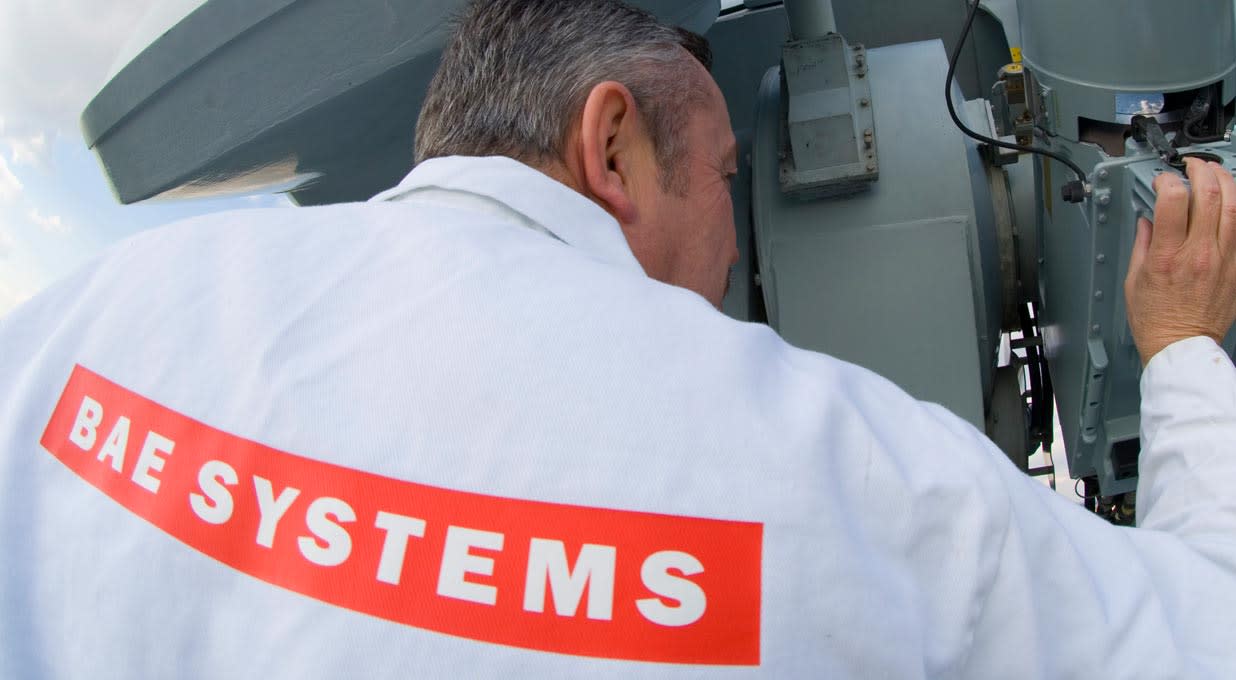BAE Systems’ full-year guidance has been reiterated, with sales forecast to grow between 7-9% from 2024’s base of £28.3bn. Underlying operating profits are expected to outpace this, moving 8-10% higher from £3.0bn last year.
Free cash flow is expected to exceed £1.1bn (2024: £2.5bn).
BAE does not expect to be “materially impacted” by US tariffs, due to the vast majority of equipment it delivers to US customers being produced in the country, with largely domestic supply chains.
£392mn of the ongoing three-year £1.5bn share buyback programme, which commenced in July 2024, has been completed.
The shares were broadly flat in early trading.
Our view
BAE System’s full-year guidance remains on track. A strong start to 2025 means sales and profits are both expected to grow by at least high single digits this year.
At its core, BAE Systems manufactures heavy-duty military equipment like fighter jets, aircraft and submarines. While global tensions remain elevated, many governments are expected to keep raising their defence budgets over the coming years, and BAE looks well-placed to capture some of this extra spending.
Despite being a UK-based company, nearly 50% of its sales come from the US, making it the largest single contributing region. On an absolute basis, US military spending trumps any other country in the world, so having large exposure to this market is proving very beneficial.
BAE doesn’t expect to be materially impacted by tariffs as they currently stand. The vast majority of equipment it delivers to its US customers is being produced in-country, with largely domestic supply chains.
Demand for the group’s products and services remains strong, helping to push the order book up to a record £77.8bn at the last count. Because these are typically long-cycle orders, with revenues spread over several years, it gives BAE multi-year revenue visibility. That’s an enviable asset to have and helps underpin a prospective dividend yield of 2.1%. Please remember no dividend is ever guaranteed.
But keep in mind that profitability hinges on an ability to estimate future costs. The long-term nature of many contracts means that the related risks and costs can change over time. Currently, potential supply chain issues and production delays have been called out by management as the main trip hazards.
Despite the rise in debt to help fund the Ball acquisition, we’re happy with the balance sheet. BAE has a strong demand outlook and plenty of free cash flow pumping around the business to manage these debt payments. However, it does mean we could see the rate of share buybacks slow in the near to medium term. Remember, no shareholder returns are guaranteed.
BAE Systems is one of our preferred names in the defence sector given its diverse portfolio and geographic footprint. The demand outlook is strong, and we think BAE's in good shape to deliver on its long-term growth strategy.
A lot of this strength now looks priced in though, with its valuation sitting well above the long-run average. That increases risk, with any missteps likely to be punished hard by markets. Operational and supply chain challenges will have to be navigated carefully, and some ups and downs along the way can’t be ruled out.
Environmental, social and governance (ESG) risk
The aerospace and defence sector is high-risk in terms of ESG. Product governance and business ethics are key risk drivers. Carbon emissions from products and services, data privacy and security and labour relations are also contributors to ESG risk.
According to Sustainalytics, BAE System’s management of ESG risk is strong.
It has a product safety policy and chain of accountability and assesses safety throughout product development. It has a board-level committee that oversees business ethics risks and has improved disclosure regarding human rights. However, disclosure regarding quality management standards and external certifications are lacking, and BAE should improve reporting on business ethics incident investigations. Employee development programmes are strong and the group has committed to net zero with interim targets in place.
BAE Systems key facts
All ratios are sourced from LSEG Datastream, based on previous day’s closing values. Please remember yields are variable and not a reliable indicator of future income. Keep in mind key figures shouldn’t be looked at on their own – it’s important to understand the big picture.
This article is not advice or a recommendation to buy, sell or hold any investment.No view is given on the present or future value or price of any investment, and investors should form their own view on any proposed investment.This article has not been prepared in accordance with legal requirements designed to promote the independence of investment research and is considered a marketing communication.Non - independent research is not subject to FCA rules prohibiting dealing ahead of research, however HL has put controls in place(including dealing restrictions, physical and information barriers) to manage potential conflicts of interest presented by such dealing.Please see our full non - independent research disclosure for more information.


